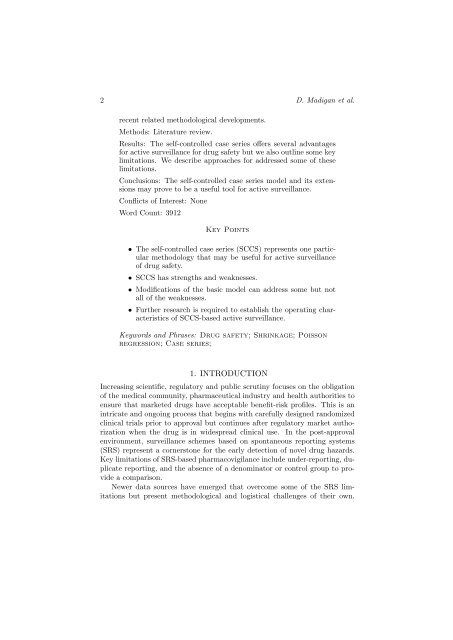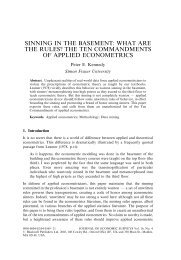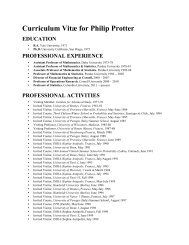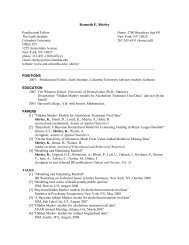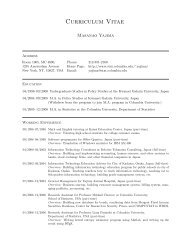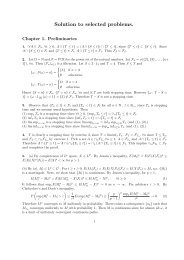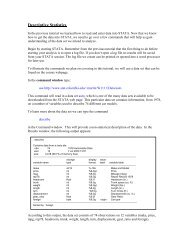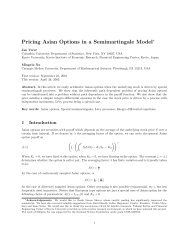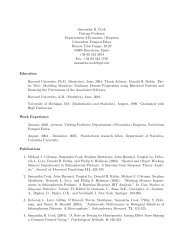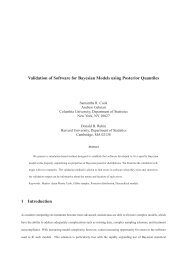The Self-Controlled Case Series - Department of Statistics ...
The Self-Controlled Case Series - Department of Statistics ...
The Self-Controlled Case Series - Department of Statistics ...
Create successful ePaper yourself
Turn your PDF publications into a flip-book with our unique Google optimized e-Paper software.
2 D. Madigan et al.<br />
recent related methodological developments.<br />
Methods: Literature review.<br />
Results: <strong>The</strong> self-controlled case series <strong>of</strong>fers several advantages<br />
for active surveillance for drug safety but we also outline some key<br />
limitations. We describe approaches for addressed some <strong>of</strong> these<br />
limitations.<br />
Conclusions: <strong>The</strong> self-controlled case series model and its extensions<br />
may prove to be a useful tool for active surveillance.<br />
Conflicts <strong>of</strong> Interest: None<br />
Word Count: 3912<br />
Key Points<br />
• <strong>The</strong> self-controlled case series (SCCS) represents one particular<br />
methodology that may be useful for active surveillance<br />
<strong>of</strong> drug safety.<br />
• SCCS has strengths and weaknesses.<br />
• Modifications <strong>of</strong> the basic model can address some but not<br />
all <strong>of</strong> the weaknesses.<br />
• Further research is required to establish the operating characteristics<br />
<strong>of</strong> SCCS-based active surveillance.<br />
Keywords and Phrases: Drug safety; Shrinkage; Poisson<br />
regression; <strong>Case</strong> series;<br />
1. INTRODUCTION<br />
Increasing scientific, regulatory and public scrutiny focuses on the obligation<br />
<strong>of</strong> the medical community, pharmaceutical industry and health authorities to<br />
ensure that marketed drugs have acceptable benefit-risk pr<strong>of</strong>iles. This is an<br />
intricate and ongoing process that begins with carefully designed randomized<br />
clinical trials prior to approval but continues after regulatory market authorization<br />
when the drug is in widespread clinical use. In the post-approval<br />
environment, surveillance schemes based on spontaneous reporting systems<br />
(SRS) represent a cornerstone for the early detection <strong>of</strong> novel drug hazards.<br />
Key limitations <strong>of</strong> SRS-based pharmacovigilance include under-reporting, duplicate<br />
reporting, and the absence <strong>of</strong> a denominator or control group to provide<br />
a comparison.<br />
Newer data sources have emerged that overcome some <strong>of</strong> the SRS limitations<br />
but present methodological and logistical challenges <strong>of</strong> their own.


